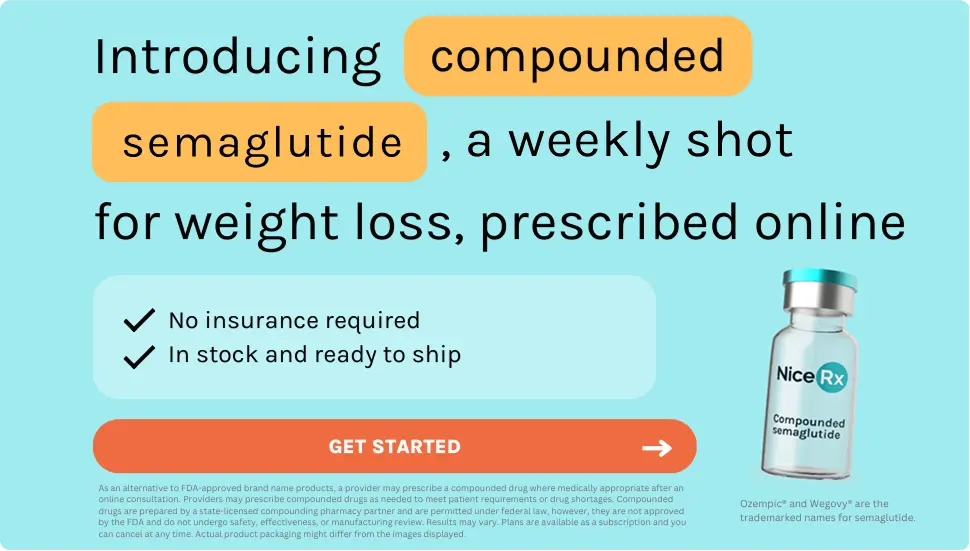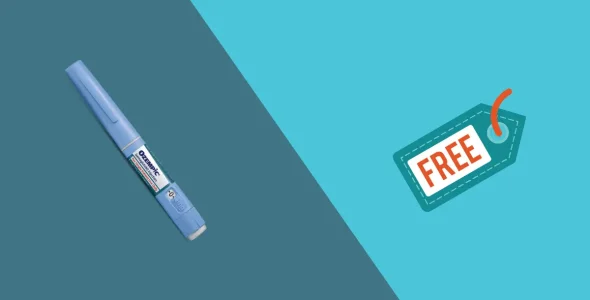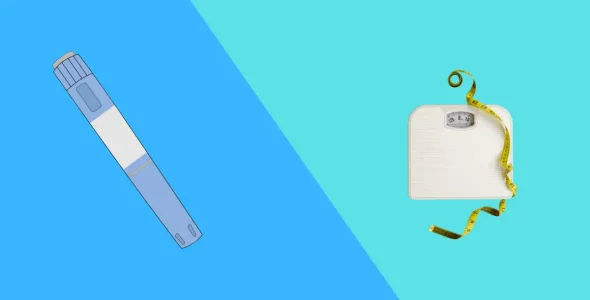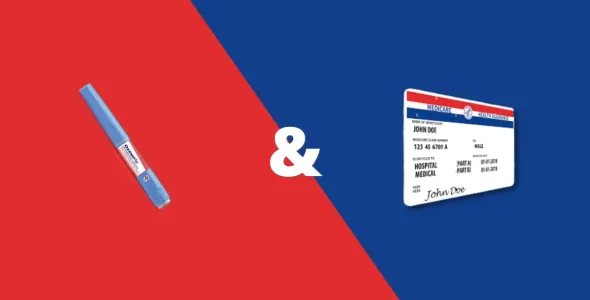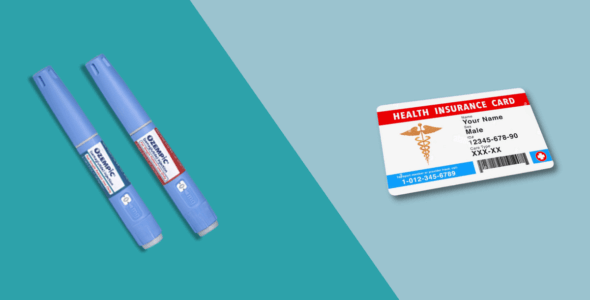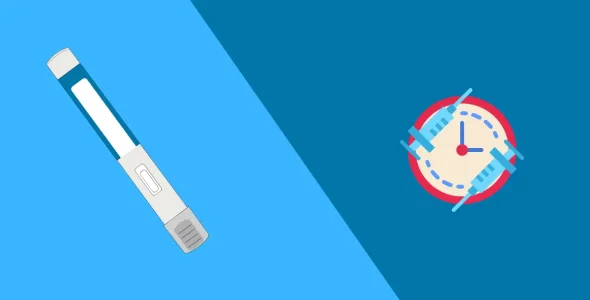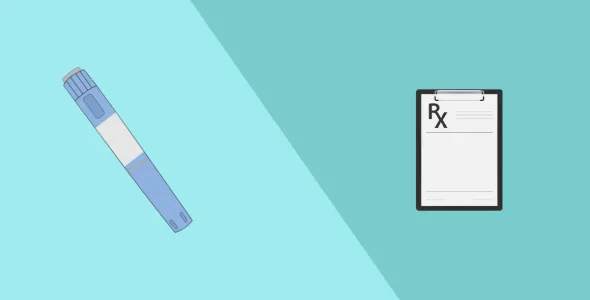How to qualify for Ozempic in 2025: Step-by-step guide
Ozempic has become a household name, praised for its ability to manage blood sugar and support weight loss. But figuring out how to actually qualify for a prescription in 2025 can feel confusing and overwhelming. Here’s a clear, step-by-step guide to help you understand the qualifications, navigate insurance hurdles, and improve your chances of getting prescribed this popular weight loss and diabetes medication.
Key highlights
- Ozempic (semaglutide) is a GLP-1 agonist approved to lower blood sugar levels in people with type 2 diabetes and also used off-label for weight loss. It can be expensive without insurance.
- To qualify for Ozempic, you typically need a BMI ≥30, or a BMI ≥27 with weight-related conditions like hypertension, prediabetes, or high cholesterol.
- The qualification process begins with self-assessing your eligibility, reviewing your BMI, medical history, and insurance coverage.
- The Ozempic Savings Card can reduce the cost to just $25 per month if you have private or commercial insurance that covers Ozempic, or $499 per month without insurance.
- The Novo Nordisk Patient Assistance Program (PAP) provides free Ozempic to low-income individuals who meet certain income and insurance requirements.
- If your insurance plan doesn’t cover Ozempic, you can explore manufacturer savings cards, telehealth options, or alternative GLP-1 medications like Wegovy or Mounjaro.
Ozempic (semaglutide) is an FDA-approved glucagon-like peptide-1 (GLP-1) receptor agonist made by Novo Nordisk. It is used to lower blood sugar in people with type 2 diabetes and is also used off-label for weight loss in people with obesity and overweight. It is also approved to reduce the risk of major adverse cardiovascular events in adults with cardiovascular disease.
Ozempic is in high demand, primarily due to its effectiveness in managing diabetes and promoting weight loss. However, it comes with a high cost, often exceeding $1,000 without insurance. That adds up to around $12,000 annually, making it unaffordable for many patients.
This article simplifies the Ozempic two-part qualification process, breaking down both the medical criteria and the insurance hurdles that often determine access. The final decision on whether Ozempic is right for you is at the discretion of a licensed healthcare professional.
Wondering how to qualify for Ozempic? Our guide breaks down the FDA-approved criteria, BMI requirements, insurance hurdles, and the step-by-step process to determine eligibility.
Understanding the FDA-approved qualification criteria
A doctor will evaluate your overall health, medical history, and lab results to determine if Ozempic is a safe and effective treatment for you. This often involves checking for FDA-approved indications such as:
A diagnosis of type 2 diabetes
Ozempic is FDA-approved for adults with type 2 diabetes. Having a confirmed diagnosis of type 2 diabetes strengthens the medical justification for prescribing Ozempic and also increases the likelihood that insurance will cover the medication.
Healthcare providers typically review blood sugar records, HbA1c levels, and other relevant lab results to confirm the diagnosis before prescribing, ensuring that the treatment is both safe and appropriate for the patient’s health needs.
Reducing cardiovascular risk
Ozempic has been shown to help lower the risk of major cardiovascular events, such as heart attack or stroke, in adults with type 2 diabetes who have existing heart disease or are at high risk.
Doctors may consider this benefit when determining if Ozempic is appropriate, especially for patients with risk factors like high blood pressure, high cholesterol, or a history of heart problems. Including cardiovascular risk in the treatment decision can strengthen the medical justification for prescribing Ozempic and may help with insurance coverage.
Managing chronic kidney disease
The FDA has also approved its use to prevent end-stage kidney disease in people with type 2 diabetes and chronic kidney disease, as it can help improve blood sugar control without putting excessive strain on the kidneys.
Doctors evaluate kidney function through lab tests, such as eGFR and creatinine levels, to determine if the medication is safe and appropriate. Addressing CKD alongside diabetes supports overall health, strengthens the medical justification for prescribing Ozempic and increases the likelihood of insurance coverage.
Weight management (off-label)
When considering Ozempic for weight management, its use is considered off-label. Doctors often consider similar criteria to Wegovy (semaglutide for weight loss).
- BMI of 30 or higher (obesity): Patients with a body mass index of 30 or above are classified as obese. Obese individuals are generally considered the primary candidates for weight management treatment, as body weight reduction can significantly improve overall health and reduce the risk of chronic diseases.
- BMI of 27 or higher (overweight) with at least one weight-related comorbidity: Patients who are overweight but have a BMI of 27 or higher may also qualify if they have at least one health condition linked to excess weight. These comorbidities amplify the health risks associated with being overweight, making weight management treatment medically justifiable.
Common comorbidities include:
- High blood pressure (Hypertension)
- High cholesterol (Dyslipidemia)
- Obstructive sleep apnea
- Heart disease
- Insulin resistance/Pre-diabetes
- Polycystic ovary syndrome (PCOS)
Wegovy contains the same active ingredient as Ozempic, semaglutide, but it is FDA-approved for chronic weight management in adults. This means it has undergone clinical trials demonstrating its effectiveness and safety for helping patients lose weight and maintain that loss over time.
Unlike Ozempic, which is primarily prescribed for type 2 diabetes and sometimes used off-label for weight loss, Wegovy’s official indication for weight loss allows doctors and insurance companies to support its use explicitly for obesity or overweight patients with related health conditions.
A step-by-step guide to getting an Ozempic prescription
This actionable plan walks you through the process of securing an Ozempic prescription, from self-assessment to accessing the medication.
Step 1: Self-assess
Start by reviewing the medical criteria outlined above. Assess if you meet the FDA-approved indications, such as a type 2 diabetes diagnosis, or the off-label weight management criteria (BMI 30+ or BMI 27+ with comorbidities). This step helps you understand whether pursuing a prescription is realistic.
Step 2: Choosing your provider and scheduling an appointment
Decide which healthcare provider is right for you: Primary Care Physician (PCP), Endocrinologist, Weight Loss Specialist, or a reputable telehealth service.
In-person visits allow for a thorough physical exam, lab tests, and direct interaction.
Telehealth offers convenience and faster access, but requires careful vetting to ensure the provider follows proper medical standards.
Your provider will determine if Ozempic is safe and appropriate for you.
Step 3: Prepare for your consultation
Gather key information before your appointment, including:
- Current weight, height, and BMI
- List of comorbidities
- Medical history and records of previous medications or weight loss attempts
- Results from recent blood panels (A1C, fasting glucose, lipid panel) to assess metabolic health
Being transparent about your full medical history, past weight loss efforts, and any medications you’ve tried is essential for a safe and accurate evaluation.
Step 4: Have a consultation with a licensed provider
During your appointment, discuss your health goals and why you think Ozempic may be a good fit. Be honest about your medical history. A responsible provider will also assess any safety risks and may determine if Ozempic is not suitable, ensuring your treatment is both safe and effective.
Step 5: Navigate the insurance process
If prescribed, your doctor’s office will typically submit a prior authorization request to your insurance company. Be prepared for potential denials, and understand that an appeal process may be necessary to secure coverage.
Step 6: Explore pharmacy options
Once approved, locate a participating pharmacy to fill your prescription. If insurance coverage is denied, consider manufacturer savings programs (Ozempic Savings Card), patient assistance programs (Novo Nordisk Patient Assistance Program), or cash-pay options such as NovoCare Pharmacy to make the medication more affordable.
Who is not qualified for Ozempic?
Not everyone is eligible for Ozempic. Doctors consider a variety of factors before prescribing it to ensure safety and effectiveness.
Contraindications (black box warnings)
Ozempic has a black box warning from the FDA for the risk of thyroid tumors or thyroid cancer.
You should not use Ozempic if you:
- Are allergic to any of the ingredients
- Have a personal or family history of medullary thyroid carcinoma (MTC) or Multiple Endocrine Neoplasia syndrome type 2 (MEN 2)
- Are pregnant or planning to become pregnant
- Are breastfeeding
- Have serious kidney or liver problems
- Have a severe gastrointestinal disease such as gastroparesis (delayed stomach emptying)
Serious conditions
People who may not qualify are:
- People with a personal history of pancreatitis (inflammation of the pancreas) or gallbladder disease
- People with severe gastrointestinal disease, such as gastroparesis (delayed stomach emptying)
- People with type 1 diabetes or diabetic ketoacidosis
Does insurance cover Ozempic?
Having a prescription for Ozempic doesn’t always mean you’ll be able to get it easily. Insurance coverage is often the biggest barrier.
Coverage is much more likely if you have a confirmed diagnosis of type 2 diabetes, since Ozempic is FDA-approved for that condition. In contrast, when prescribed off-label for weight loss, insurance companies frequently deny coverage because most commercial plans still exclude medications labeled solely for obesity treatment.
As a result, patients without type 2 diabetes often have to pay out of pocket or explore manufacturer savings programs and patient assistance options to make the medication more affordable.
Many insurance plans, including Medicare and Medicaid, will help pay for Ozempic if it’s prescribed for type 2 diabetes, but not for weight loss. How much you will pay depends on your copay and if you’ve met your deductible.
If your insurance doesn’t cover Ozempic, start by reading the “Indications” section on the drug information sheet. Next, talk to your insurance company or pharmacist. For expensive drugs like Ozempic, the insurance company may need prior authorization, which means your doctor has to fill out forms to explain why it’s medically necessary.
Check the drug formulary
A drug formulary is your insurance plan’s official list of medications it covers, often grouped into tiers that determine how much you’ll pay out of pocket. If Ozempic isn’t listed or is placed in a higher, more expensive tier, coverage may be limited or denied.
You can check your plan’s formulary by logging into your insurance provider’s member portal or calling the customer service number on your insurance card. Search for “Ozempic” or “semaglutide” in the formulary list to see if it’s covered, what documentation may be required, and whether prior authorization is needed.
Prior authorization (PA)
A prior authorization (PA) is a pre-approval process required by insurance companies before they agree to cover certain medications. In simple terms, your doctor must prove to your insurance company that you meet their specific criteria before they will agree to pay for Ozempic.
For Ozempic, insurers typically request documentation that demonstrates medical necessity. This often includes:
- Proof of type 2 diabetes diagnosis (such as lab results or HbA1c levels).
- BMI records and evidence of obesity-related health risks, if prescribed for weight management.
- Documentation of failed attempts with other medications, like metformin or lifestyle interventions.
- Details of high-risk medical conditions such as cardiovascular disease (CVD) or chronic kidney disease (CKD).
To get approval, your healthcare provider typically needs to include:
- Confirmation of a type 2 diabetes diagnosis supported by lab tests.
- Evidence showing you’ve tried and failed other, lower-cost treatments.
- Documentation of comorbid conditions that make Ozempic medically necessary.
Start by checking your insurer’s drug formulary to see if Ozempic is covered under your plan. Then, call your insurance provider’s customer service line to ask about specific prior authorization requirements, including what documentation they need from your doctor. Finally, be prepared for the possibility of an initial denial. Work with your healthcare provider to submit additional information or file an appeal if necessary.
Step therapy
Step therapy is a requirement of insurance companies that you try and fail on cheaper, older medications before your plan will cover a more expensive option like Ozempic. This means your doctor has to attest that the patient has tried other medications first, for a set amount of time, before the insurance provider will cover Ozempic. Your doctor can check the specific step therapy rules for your insurance plan.
In simple terms, your insurer wants to see that other treatments, such as metformin or lifestyle interventions, were ineffective or not well-tolerated before approving Ozempic.
For type 2 diabetes, insurers often require proof that you’ve already tried standard first-line treatments like metformin or sulfonylureas. For weight management, they may ask for documentation showing that lifestyle changes or other lower-cost medications were unsuccessful.
Options for uninsured or denied patients
The list price of Ozempic is $997.58 for a 28-day supply without insurance, which is about $249.40 per week or $11,970.96 per year, making it challenging to afford without prescription drug insurance.
There are several ways to save on the medication:
Novo Nordisk Patient Assistance Program (PAP)
Drug manufacturers offer patient assistance programs to help low-income, uninsured patients and underinsured individuals access their medication for free.
The NovoCare Patient Assistance Program (PAP) helps low-income individuals who are uninsured or underinsured and cannot afford their medications. If you qualify, the program will provide you with free Ozempic.
Patients who qualify for the Novo Nordisk PAP can receive Ozempic at no cost. This makes the program especially valuable for those managing type 2 diabetes who may face high out-of-pocket costs. The Novo Nordisk Patient Assistance Program is not only a lifeline for those who need help affording their medications, but it’s also completely free to use.
To apply, you need to meet certain income and eligibility requirements:
- You are a U.S. citizen or resident
- Your total household income is at or below 400% of the federal poverty level (FPL)
- You have a prescription that meets the FDA-approved labeling (type 2 diabetes)
- You are uninsured or have Medicare with no other prescription drug coverage
- You do not have private or commercial insurance
- You are not enrolled or qualify for any federal, state, or government programs that provide prescription benefits, such as Medicaid, Low Income Subsidy (LIS), or Veterans Affairs (VA) benefits.
You can visit the NovoCare website to check if you qualify and start the application process, or call 1-866-310-7549.
If you’re eligible, there may be income limits, so having documents like recent pay stubs or tax returns ready can help speed up the process. Also, keep in mind that patient assistance programs usually only cover the medication when it’s prescribed for its approved use, so using it for weight loss without type 2 diabetes may not qualify.
Ozempic Savings Card
If you have commercial insurance coverage that has coverage for Ozempic, you could pay as little as $25 for a 1-month, 2-month prescription, or 3-month supply with the Ozempic Savings Card, with the following maximum savings:
- $100 for a one-month supply
- $200 for a two-month supply
- $300 for a three-month supply
People with government insurance like Medicaid, Medicare, VA, TRICARE, or similar plans can’t use the Ozempic Savings Card. If you have employer insurance but it doesn’t cover Ozempic, you also can’t use the card. It’s only for people with private or commercial insurance that covers Ozempic.
To apply for the Ozempic Savings Card and check if you qualify, visit the Novo Nordisk website. If you already paid for your Ozempic before you found out about the coupon, you might be able to get some of your money back using Novo Nordisk’s Savings Offer reimbursement form, if you qualify.
NovoCare Pharmacy
If your insurance doesn’t cover Ozempic, you may still be able to access it at a reduced cost through NovoCare Pharmacy, a service offered by the drug’s manufacturer, Novo Nordisk.
NovoCare provides a cash-pay option where eligible patients can purchase Ozempic for around $499 per month without insurance. This program is designed to make the medication more affordable for those paying out of pocket.
To get started, visit the official NovoCare website, where you can verify your eligibility, find participating pharmacies, and enroll directly in the program.
Pharmacy discount cards
Pharmacy discount programs like GoodRx and SingleCare can help lower the cost of medications, including Ozempic, if you’re paying out of pocket.
- GoodRx provides discount coupons that can be used at most major pharmacies, including Walgreens, CVS, and Walmart. For example, a 30-day supply of Ozempic might cost around $1,000 without insurance, but when using a GoodRx coupon, the price could drop to about $965 at participating pharmacies.
- SingleCare also offers discount cards that can be used at many pharmacies. You can get Ozempic for as low as $822 per month when using a SingleCare discount card.
- RxSaver offers prescription discount cards that can help you save up to 80% on medications, including Ozempic, at participating pharmacies like CVS, Walgreens, and Walmart. You can access these discounts instantly through their website or mobile app, with no membership or sign-up required.
Approved alternatives
Ozempic can be costly, but there are cheaper alternatives, including GLP-1 and non-GLP-1 medications. If your insurance doesn’t cover it or you’re paying out of pocket, talk to your doctor about alternatives to Ozempic.
GLP-1 alternatives
Mounjaro and Zepbound (tirzepatide)
Tirzepatide is the active ingredient in Mounjaro and Zepbound. Both are once-weekly injections with the same dosages, but they are approved for different indications.
Like Wegovy, Zepbound is FDA-approved for weight management in adults with obesity (BMI of 30 or higher) or overweight (BMI of 27 or higher) and related health issues like high blood pressure or diabetes. Mounjaro is FDA-approved for controlling blood sugar in adults with type 2 diabetes, like Ozempic and Rybelsus.
Rybelsus (semaglutide)
Rybelsus is an oral tablet that is FDA-approved for lowering blood sugar levels in adults with type 2 diabetes and may also help with weight loss. Although it’s not FDA-approved to reduce the risk of heart attack or stroke, studies suggest it’s safe for people with heart disease.
Without insurance, a 30-day supply of Rybelsus costs about $997.58. If you’re eligible, you could pay $10 for Rybelsus (1-month supply) with a copay savings card from the manufacturer. The Rybelsus Savings Card program is limited to those with commercial insurance.
Trulicity (dulaglutide)
Trulicity (dulaglutide) is a once-weekly subcutaneous injectable GLP-1 agonist that helps control blood sugar levels and reduce cardiovascular risk in adults and children from 10 years of age with type 2 diabetes. Some people may also experience weight loss with it.
Without insurance, a month’s supply is around $800-$900, but with insurance, it can be much lower, depending on your plan.
The Trulicity Savings Card program can reduce the cost of Trulicity to as low as $25 per month if you have commercial insurance that covers Trulicity.
Saxenda and Victoza (liraglutide)
Liraglutide, sold under the brand names Victoza and Saxenda, is used to treat type 2 diabetes and obesity.
Approved in 2010, Saxenda (liraglutide) was the first GLP-1 medication approved for weight loss in adults with obesity or overweight with at least one weight-related health issue. It is also approved for children aged 12 and older with obesity. It’s made by the same company as Wegovy, Novo Nordisk.
Saxenda has the same list price as Wegovy, costing about $1,349.02 per month without insurance. However, the Saxenda Savings Card offered by Novo Nordisk can reduce the cost to as low as $25 for those with commercial insurance.
Victoza (liraglutide) is another injectable GLP-1 agonist that lowers blood sugar in adults with type 2 diabetes with known heart disease, but it needs to be injected once a day instead of once a week because it doesn’t stay in the body as long as Mounjaro and other alternatives. The FDA approved liraglutide, the first generic of a once-daily GLP-1 injection, in December 2024.
Unlike Mounjaro, Victoza has proven heart protection benefits. It’s approved for people aged 10 and older. However, Victoza has fewer side effects compared to Mounjaro.
Compounded semaglutide
Compounded semaglutide is custom-made by licensed compounding pharmacies to accommodate a patient’s specific needs when commercially available drugs aren’t an option.
Compounding pharmacies offer customized semaglutide, but it’s important to make sure they are licensed. The FDA warns against buying compounded semaglutide with salt forms.
Always consult a healthcare professional for medical advice before buying medication. Be careful when buying semaglutide online, as some products may not have the FDA-approved ingredient, which can be risky for your health.
Compounded tirzepatide
Compounded tirzepatide is a customized version of the medication, typically made at specialty pharmacies but not reviewed or approved by the FDA. It is available to patients who require a custom dosing or formulation that is not commercially available.
The cost of compounded tirzepatide without insurance can range from about $300 to $500 per month. However, prices vary depending on the compounding pharmacy you use, dosage, and quantity.
Non-GLP-1 alternatives
- Metformin: Metformin (Glumetza and Fortamet) is a pill used to treat type 2 diabetes by helping control blood sugar levels.
- Phentermine/topiramate (Qsymia): Topiramate is a once-daily medication used to treat seizures and prevent migraines. Phentermine is an appetite suppressant that works by increasing levels of norepinephrine in the brain, which signals a decrease in hunger. Qsymia can also be used for weight loss in combination with other drugs.
- Naltrexone/bupropion (Contrave): It is taken twice daily and used to help with weight loss by reducing hunger and cravings. It combines two drugs, naltrexone and bupropion, to affect brain chemicals that control hunger.
- Orlistat (Xenical or Alli): It is taken three times daily and helps with weight loss by blocking the absorption of some fat from the food you eat. It works in the stomach and intestines to reduce the number of calories your body absorbs.
Ozempic vs. Wegovy: Choosing the right medication
Because both Ozempic and Wegovy contain the same active ingredient, semaglutide, it’s easy to see why they’re often confused. However, they serve different purposes. Ozempic is FDA-approved for type 2 diabetes and helps manage blood sugar while reducing cardiovascular risk. Wegovy is FDA-approved specifically for chronic weight management in people with obesity or overweight who have related health conditions.
The two drugs also differ in dosage and pen design. Ozempic has a maximum dosage of 2 mg weekly, while Wegovy has a maximum dosage of 2.4 mg weekly, optimized for weight loss. When it comes to insurance coverage, Ozempic is more likely to be covered if you have a type 2 diabetes diagnosis. Wegovy’s coverage for weight loss alone can be more limited since many insurance plans exclude obesity-only medications.
Both medications work similarly in the body, but the right choice depends on your health goals, diagnosis, and insurance coverage.
Post-qualification: What happens next?
Getting approved for Ozempic is only the first step. Starting treatment requires a long-term commitment and close follow-up with your healthcare provider.
Your doctor will typically begin with a low starting dose of 0.25 mg once weekly to help your body adjust and minimize side effects like nausea, bloating, or other gastrointestinal issues. Over several weeks, the dose is gradually increased (usually every four weeks) until you reach the maintenance dose prescribed for your health goals.
This slow titration schedule is essential for improving tolerance and reducing discomfort, helping you stay consistent with treatment. During this phase, your provider may also monitor blood sugar, weight, and side effects to fine-tune your plan for the best results.
Long-term commitment and monitoring
Ozempic is intended for long-term treatment and is not a short-term fix. Stopping the medication often leads to weight regain and a reversal of blood sugar improvements, as its effects wear off once the drug is discontinued.
Regular follow-up appointments with your licensed healthcare provider are crucial. These visits allow for dosage adjustments, monitoring of blood sugar levels, and early detection of any potential side effects such as nausea or digestive issues. Ongoing communication with your clinician helps ensure the medication remains safe, effective, and tailored to your individual health goals.
FAQ’s
Can I get Ozempic for weight loss only?
Yes, but using Ozempic solely for weight loss is considered “off-label.” Doctors can prescribe it, but insurance usually won’t cover it unless you have type 2 diabetes. Wegovy, which contains the same active ingredient, is FDA-approved specifically for weight management.
What BMI do you need for Ozempic?
For off-label weight loss, most providers prescribe Ozempic to patients with a BMI of 30 or higher, or 27 and above if they have a weight-related condition like hypertension or sleep apnea. For type 2 diabetes, there’s no strict BMI cutoff, though higher BMI often influences treatment decisions.
How can I get Ozempic if my insurance denies it?
If your insurance denies Ozempic, talk to your doctor about filing an appeal or submitting additional documentation. You can also use the Novo Nordisk savings card to lower costs ($499 per month without insurance) or apply for the patient assistance program to potentially get Ozempic for free.
Are telehealth prescriptions for Ozempic legitimate?
Yes, legitimate telehealth providers can prescribe Ozempic if they are licensed and follow proper medical protocols. Be cautious of platforms that skip medical evaluations or video consultations. A reputable service should uphold the same standards as an in-person clinic.
Conclusion
Qualifying for Ozempic involves a two-part journey: first, meeting the strict medical criteria, and second, navigating the often-complex insurance approval process.
Uninsured individuals in the U.S. face high costs for Ozempic, often over $1,000 for a month’s supply. Without insurance or financial assistance programs, it can be challenging to afford.
Uninsured individuals should proactively research all savings options, including manufacturer savings cards and patient assistance programs. Alternatively, you can also talk to your healthcare team to explore affordable alternatives, including other GLP-1 weight loss drugs and generic medications.
While the process can feel overwhelming, understanding these steps empowers you to have a more informed and productive conversation with your doctor.

